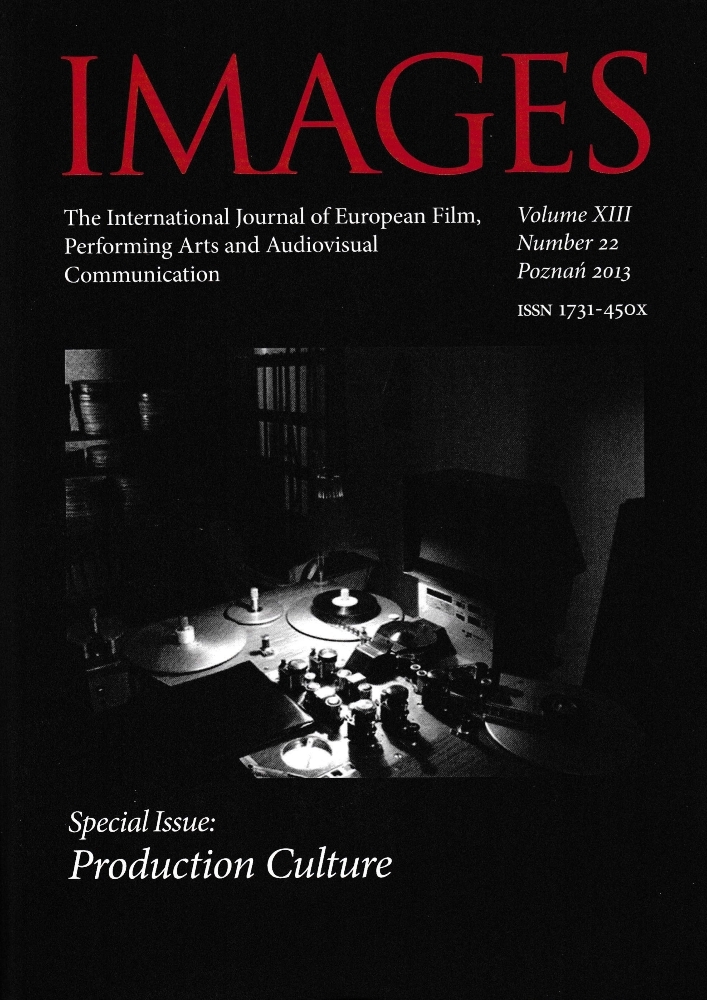Abstrakt
This article provides an overview of the recent trends and problems of Hungarian popular cinema with special regard to its cultural context outlining the process of recognition of popular cinema over the past twenty years in Hungary. In general Hungarian cinema is characterised by middle-range genres (dominantly comedy) and not by a large scope. This was the case in the 1930s and 1940s during the ’golden age’ of Hungarian comedies and popular cinema. And this typifies contemporary Hungarian popular cinema as well. However, the first decade after the political changes, the 1990s was characterised by a return to the tradition of the classical Hungarian comedies and only the 2000s brought the modernization of Hungarian popular cinema.Finansowanie
János Bolyai Research Scholarship of the Hungarian Academy of Sciences
Bibliografia
A. Anikó, “Dinosaurs, Moles and Cowboys: Late Communist Youth Media,” [in:] Via Transversa. Lost Cinema oj the Former Eastern Bloc, eds. E. Näripea, A. Trossek, Estonian Academy of Arts, Tallinn 2008, p. 125.
E. Mazierska, “Eastern European Cinema: old and new approaches,” Studies in Eastern European Cinema 2010, no. 1, p. 12.
C. Eidsvik, “Mock Realism: Te Comedy of Futility in Eastern Europe,” [in:] Comedy/Cinema/Teory, ed. A. Horton, University of California Press, Berkeley 1991, pp. 91–109.
C. Stojanova, “Post-Communist Cinema. Te politics of gender and genre,” [in:] Traditions in World Cinema, eds. L. Badley, R.B. Pal-mer and S.J. Schneider, Edinburgh University Press, Edinburgh 2006, pp. 95–114.
A Companion to Eastern European Cinemas, ed. A. Imre, Wiley-Blackwell, London 2013.
A. Imre, “Eastern Westerns: Eenlightened edutainment and national transvestism,” New Review oj Film and Television Studies 2011, no. 2, pp. 152–169.
B. Varga, “Take the Money and...? Questions of Self-governance in the Hungarian Film Industry,” Iluminace 2012, no. 4.
G. Schubert, “Sose halunk meg,” Filmvilág 1993, no. 3, p. 57.
T. Hirsch, “Csak kétszer élünk,” Filmvilág1994, no. 2. pp. 17–20).
F. Krisztina, “Innocence Lost. Cinematic Representations of 1960s Consumption for 1990s Hungary,” Anthropology oj East Europe Review 2006, no. 2, pp. 54‒61.
E. Mazierska, Polish Postcommunist Cinema: [13] B. Vidal, Heritage Film: Nation, Genre, and From Pavement Level, Peter Lang, Oxford 2007, p. 64.
Representation, Wallfower Press, New York 2012.
J. Cunningham, Hungarian Cinema: Prom Coffee House to Multiplex, Wallfower Press, New York 2004, pp. 156‒157.
http://magyar.flm.hu/fh/news/what-is-the-mo-tion-picture-act-about-hungarian-motion-picture-act.html (accessed: October 14, 2013).
On the Film Fund’s activities: http://flmalap.hu/en/images/stories/overview_may2013_download.pdf (accessed: October 14, 2013).
Licencja
Copyright
© 2013 Uniwersytet im. Adama Mickiewicza w Poznaniu
OPEN ACCESS
